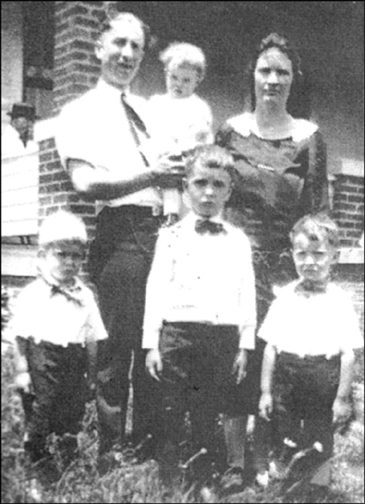Louis Feathers grew up in North Johnson City in the 1920s and 30s, first on Lowell Street and then at four different addresses on nearby Baxter Street. During part of that time, the area was outside the city limits.

“I remember,” said Louis, “when our next door neighbors, the Meador family on Lowell Street had an Edison phonograph that played cylinder recordings. I even recall some of the selections I heard played: “Redwing,” “My Pretty Quadroon” and “Life’s Railway to Heaven.” Feathers experienced the rustic lifestyle of that era such as patronizing a hand dug wooden outhouse (a.k.a. “privy”) that sat out behind the house. He and his six siblings took Saturday night baths in a large laundry tub. In spite of such hardships, there were rewards of living in that era.
Louis further recalled, “Houses were built only on one side of Lowell Street. On the other side was a large cornfield. Just south of it was a large grassy hill that I heard was once part of a golf course before it was moved eastward to a new site at the Johnson City Country Club. Airplanes occasionally landed on the hill approximately 100 yards from our home. About a quarter mile from our home and beyond the field were Oakland Woods and Gump Woods. Those fields were great places for recreation.”
Louis’s father, Ezra, an avid coin and stamp collector, occasionally paid his paperboy with a rare coin that had a numismatic value approximately equivalent to the amount that he owed. “About 1927, my parents bought the home at 1021 N. Baxter Street,” said Louis. “This was to be our home for the next seven years. The Meadors were again our next-door neighbors during a part of this period.”
Louis indicated that when they resided on Lowell Street, their dad raised chickens, but after moving to Baxter Street, they had “rabbits, rabbits and more rabbits.” He estimated that they often had more than a hundred of the little critters at one time. An unpleasant task was for him and his brothers to clean out the rabbit hutch. The structure was designed to make cleaning easier, but it was still a chore. However, the droppings were in high demand by a neighbor who ran a truck farm.
Other rewards of living in that era were the wide-open fields in the area, which included many wild berry bushes and a large chestnut tree. Periodically, Ezra and his boys engaged in picking blackberries and dewberries (similar to blackberries except more spherical) after which Nannie would can them. With the depression and a large family to feed, preserving and storing food was a necessity. Ezra built his wife a rack of shelves for storage of hundreds of jars of canned goods in the basement space on their rear-sloping lot. The quantity of jars put up during the summer was a bragging issue among women at that time. In this competition, Mrs. Feathers was usually among the winners.
The house at 1021 Baxter was a small mansion compared to their previous home. Louis and his brothers playfully waxed and polished the hardwood floors by tying rags on their feet and skating all over the rooms. During the warm months, a large screened-in back porch just off the kitchen served as an extension of the living area and was the site of many of the activities associated with canning.
In subsequent years, the Feathers family lived in three additional Baxter Street houses: 1300, 1114 and 1116, the latter being the longest. I will feature more of Louis’s well-documented Johnson City memories in future columns.

Comments are closed.